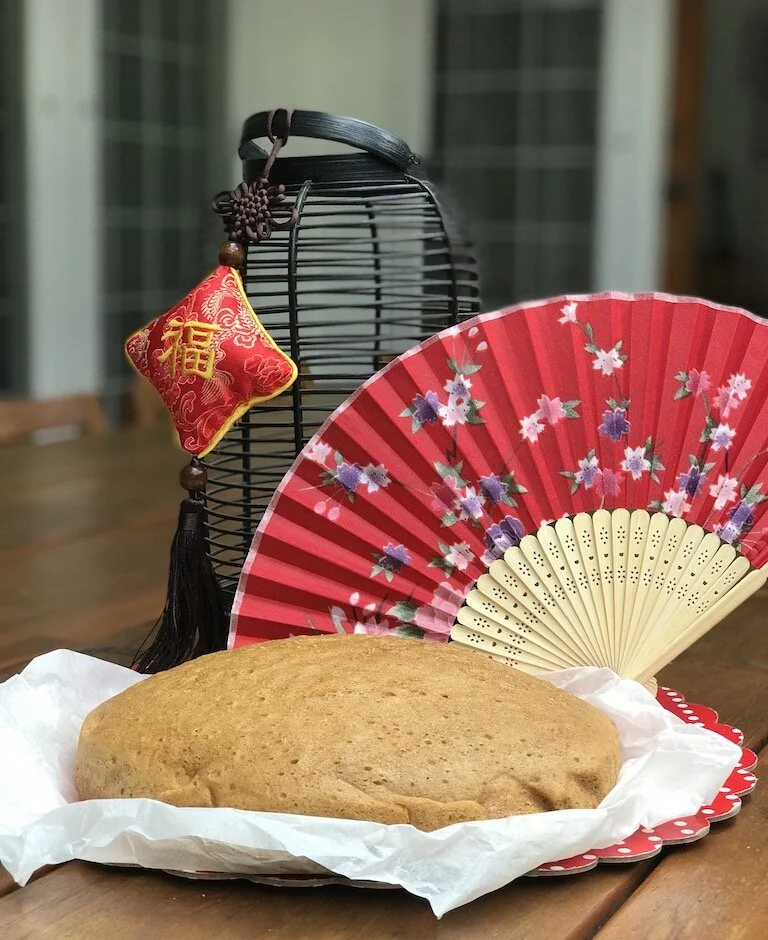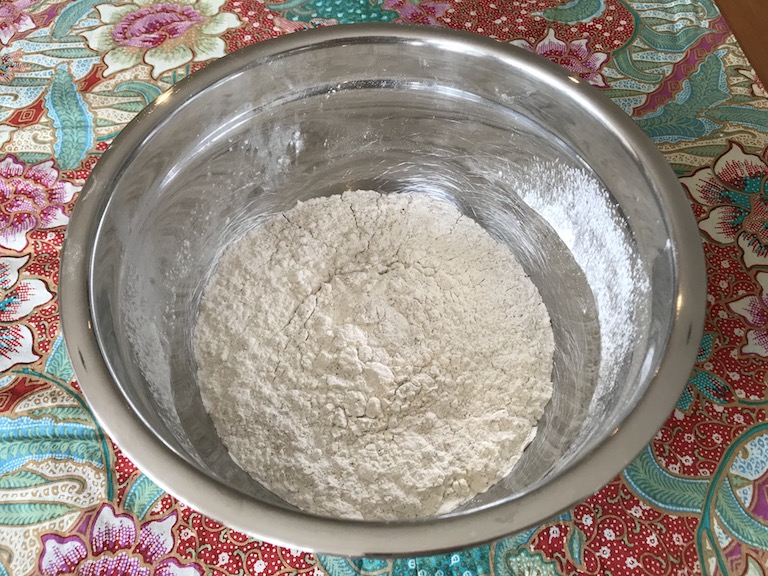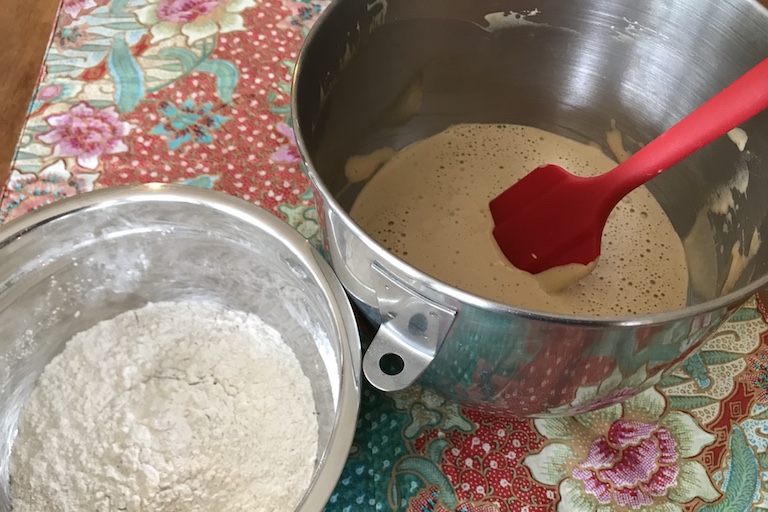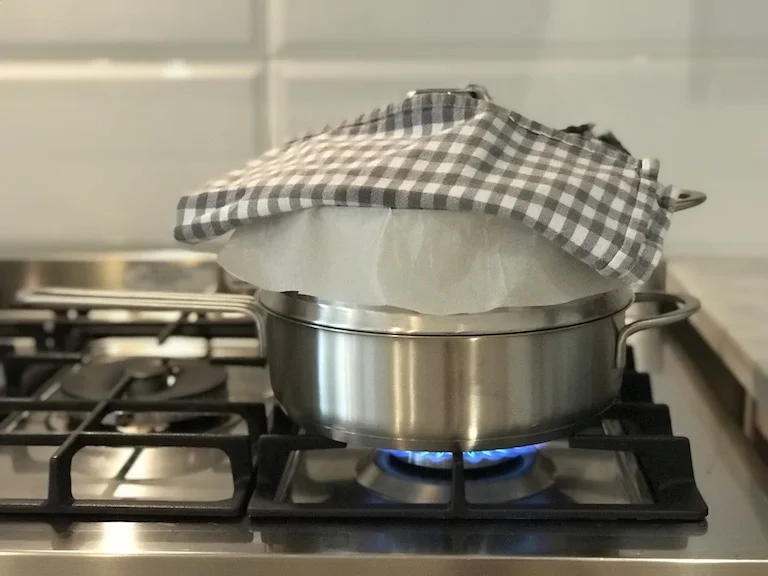How to Make ajb’s spiced Ma Lai Gao Steamed Sponge Cake this Chinese New Year
With Chinese New Year just around the corner, it’s time to return to the ajb Kitchen to prepare the Cantonese favourite, Ma lai gao (馬拉糕). The traditional recipe for this steamed sponge cake has been given the ajb special treatment with the addition of Indonesian spices, santan (coconut milk) and gula kelapa (coconut sugar). The result is a cake that is lightly spiced, soft yet fluffy and has just the right amount of sweetness.
Our recipe for Ma lai gao is super-easy but does need some preparation time. Advanced planning is required but we promise, the end result is more than worth the effort.
For those who celebrate Chinese New Year we say, Gong Xi Fa Cai!
Wishing you happiness, good health, peace and prosperity always.
Jo & Liz.
Ingredients
The simple ingredients for Ma lai gao
100g plain flour
50g self raising flour
40g custard powder
4 eggs
110g soft coconut sugar (or palm sugar)
100g caster sugar
100ml vegetable oil
2Tb coconut milk (light)
1Tb honey
1 1/2 tsp baking powder
1/3 tsp bicarb of soda
1/2 tsp cinnamon
1/4 tsp ground nutmeg
1 tsp vanilla extract
Method
Sift flours, custard powder, cinnamon and nutmeg in a mixing bowl, ensuring all are well combined. Now sift a second time then set aside.
Twice sifted flours
In a second mixing bowl combine the sugars mixing well then set aside.
Two sugars mixed
Using an electric mixer, whisk eggs and vanilla extract on a high speed for about 20 seconds, until completely blended.
Next, gradually add the sugars in a steady stream. Continue whisking until the egg mixture thickens, turning pale in colour. The volume should also increase by approximately 3x. This will take about 5 - 6 minutes. You may need to scrape the sides of the bowl.
Steadily pour sugars into egg mixture
Fold flour mixture into egg mixture one third at a time. Do this by sprinkling the flour over the egg mixture then using a folding action, ensure all ingredients are combined (do not over mix).
Gradually add the flour, taking care to not over mix
Cover the batter with a clean, dry tea towel and set aside to rest for 1.5 hours, allowing the batter to rise.
Allow the batter to rest for a minimum of 1.5 hours. Some recipes recommend resting the batter over night in the fridge
Meanwhile, prepare the steamer. (See Cook’s Notes - below, for some suggested steamer apparatus set up).
Lining the steamer in preparation for the batter
Just before the 1.5 hours of resting is over, bring the steamer to the boil over a medium heat.
In a small bowl, combine honey, coconut milk, baking powder and bicarb of soda. Mix well then fold into batter until just combined.
Some final ingredients
Finally, add the oil, gently folding until evenly distributed.
Gently mixing through the oil
Pour the batter into the prepared steamer (to a height of no more than 2/3 of the steamer insert), then cover with a clean tea towel ensuring the towel does not touch the batter (*see Cook’s Notes).
Ready for the cook top
Carefully cover with lid and steam for approximately 30 minutes, or until the cake is cooked through.
Steaming for approximately 30 minutes on a medium flame
Check using a skewer that cake is ready then remove from heat and serve warm.
Eat Ma lai gao while it's warm and fluffy
Cook’s Notes
When steaming your Ma lai gao, ensure the water is continuously boiling. Check occasionally to ensure that the water level has not completely evaporated. If you need to top up the water, do so with boiling water.
If you are not a fan of coconut milk, you can substitute with evaporated milk.
The tea towel used to cover the batter whilst steaming will ensure the top of the ma lai gao does not become soggy with condensation.
Steam Ma lai gao in a round steamer as the circle shape symbolises completeness and prosperity.
Ma lai gao is best enjoyed immediately, but can keep for up to 2-3 days in an airtight container. If eating a day or two after, return the cake to the steamer and heat through for a few minutes.
Ma lai gao is traditionally eaten at the end of a meal, however it also tastes great with some warm butterscotch sauce, lashings of caramelised bananas and a scoop of good vanilla ice cream!
There are many different steaming methods you can use to prepare Ma lai gao. Here are some suggestions:
Using a Bamboo steamer: Line your steamer with baking paper and set over a water bath.
Using a Wok: Prepare a cake tin with baking paper and sit it on top of a steaming rack inside your wok. Ensure the wok has sufficient water to allow for approx. 40 minutes of steaming. Close properly with lid.
Using a 2-piece steamer: Line the upper level of the steamer with baking paper, covering the sides completely. Make sure the lid has sufficient clearance for when the cake rises and that the lid seals properly.
Have you noticed preparations for Chinese New Year in your neighbourhood?
The anticipation is certainly peaking here in Jakarta. Chinese New Year is a festival which brings together family and friends to celebrate the beginning of a new year on the traditional Chinese Calendar. This lunar year is the Year of the Pig. In Indonesia, Chinese New Year is called “Imlek”and will be celebrated by many, including some 3 million Chinese-Indonesians on Tuesday 5th February, 2019.
Did you know?
Chinese-Indonesians are now free to celebrate Imlek, but their cultural expression was restricted in the past, reflecting the discrimination they endured for many years. In 1946 Indonesia's First President, Sukarno, introduced Chinese New Year as a national holiday but this was not to remain. In 2003 former president Megawati Soekarnoputri recognised the national holiday once more, following the actions of her predecessor, then-president Abdurrahman “Gus Dur” Wahid, who in the year 2000 was responsible for reviving Chinese traditions.
A typical Chinese New Year stand in a Jakarta supermarket
We hope you enjoyed today's blog post. Here are some other ajb Chinese New Year “Imlek” stories we would like to share with you:
Fortune Cookies and Celebrating the Chinese New Year in Jakarta
Market Feature #3 : Chinese New Year in Jakarta (Ayo ke Pasar Pagi)
ajb’s culinary tour of Jakarta’s Chinatown district of Glodok
Don't forget to keep in touch with a journey bespoke on Instagram :)
Words: Jo Stevens Photography: a journey bespoke




















